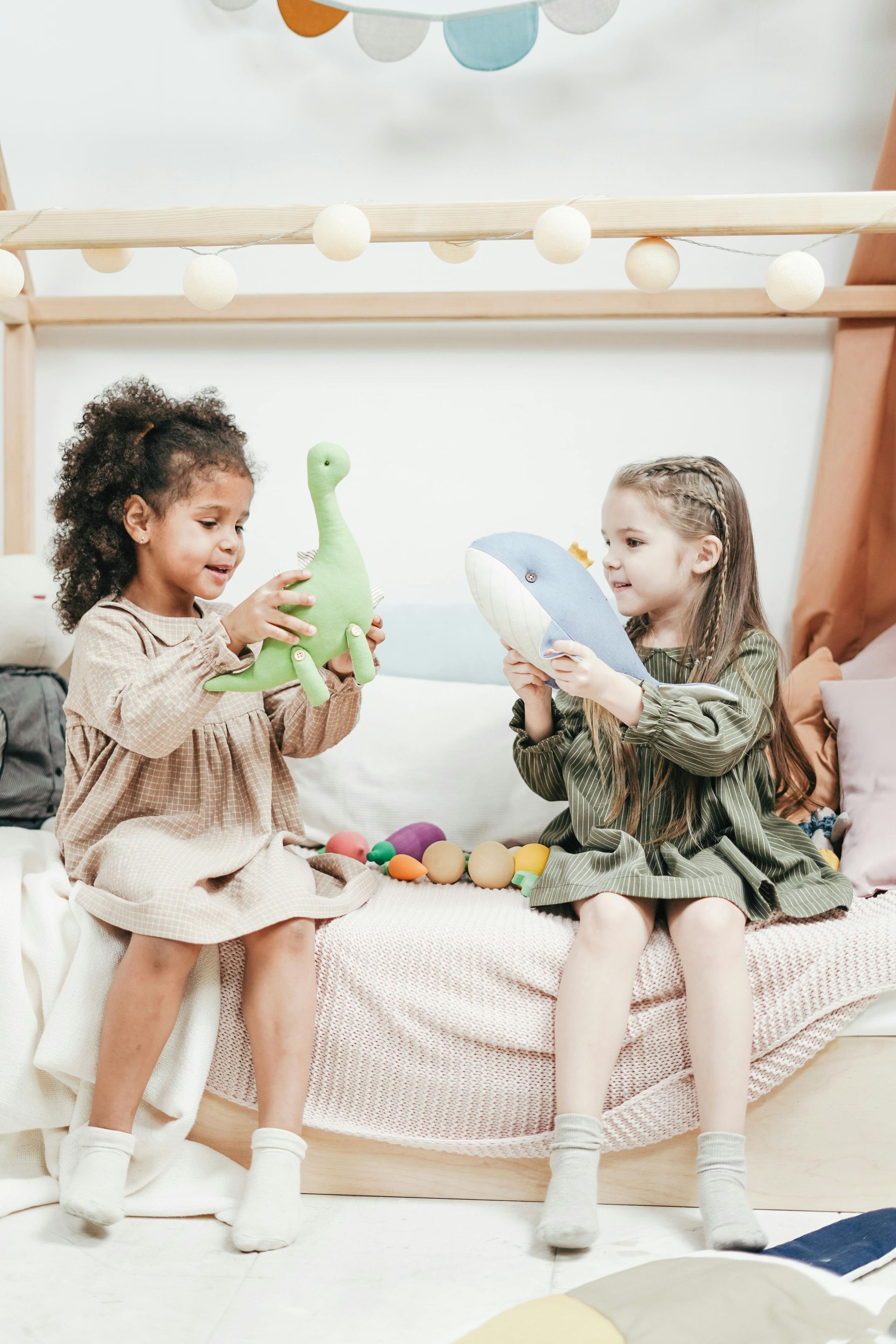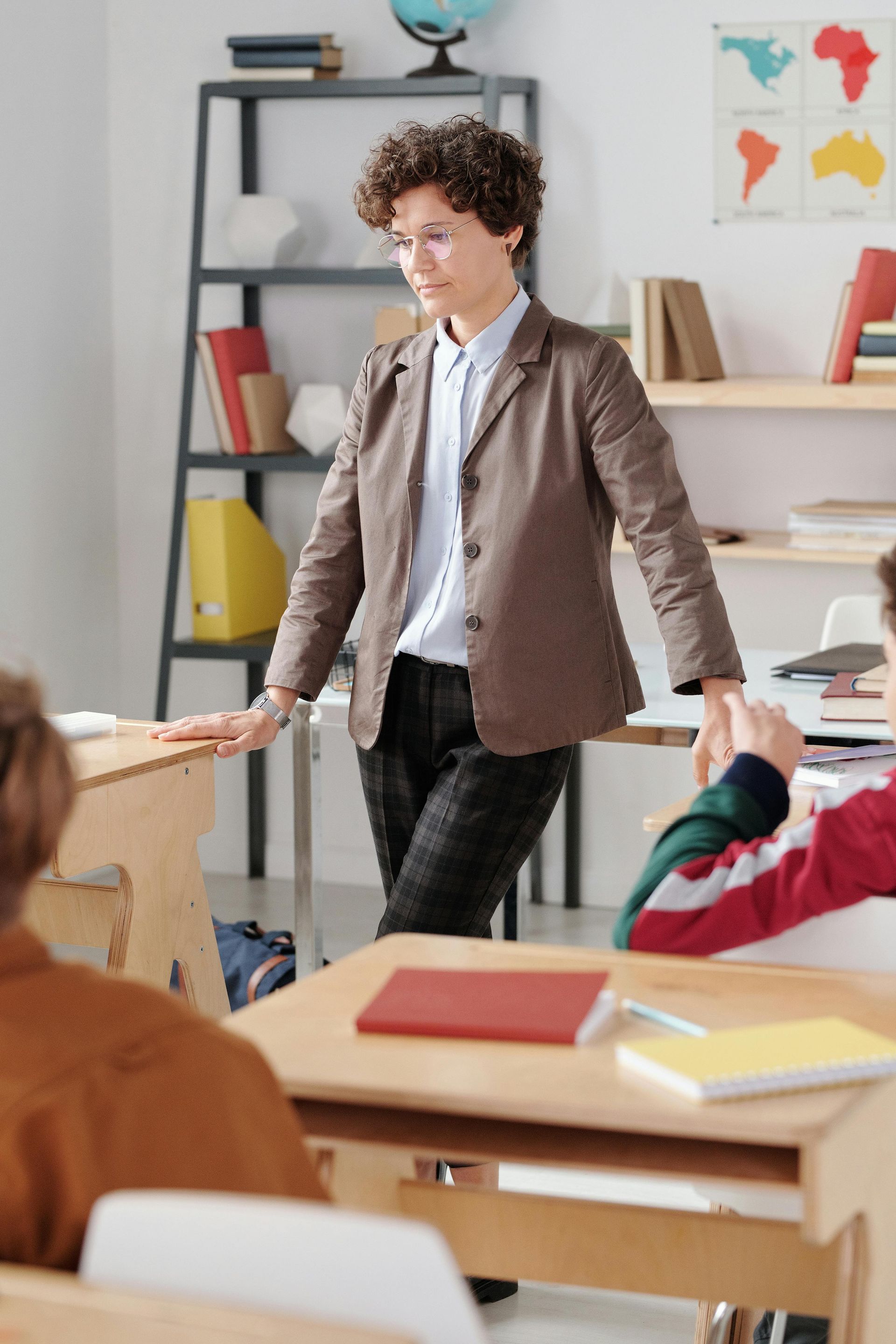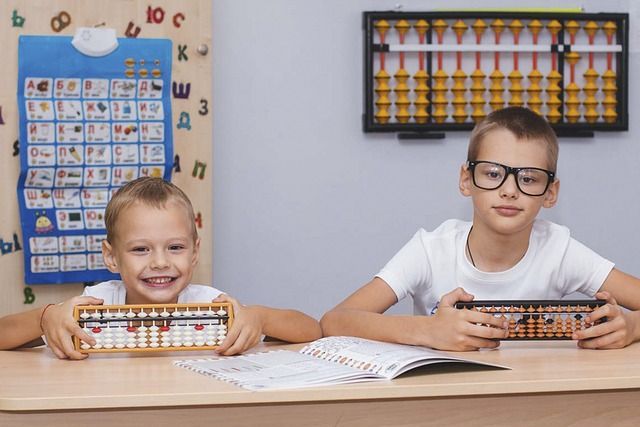9 Easy Ways to Teach Conflict Resolution Skills to Kids
Conflicts happen—especially with kids. But teaching conflict resolution skills early helps them build healthy relationships that last. In this guide, you’ll find simple, fun ways parents and teachers can turn everyday disagreements into powerful lessons in empathy, communication, and kindness.
Introduction
Ever notice how fast little disagreements can blow up? One second kids are laughing, the next someone’s mad about who gets the red crayon. That’s where teaching conflict resolution skills comes in. These skills don’t just stop arguments—they build healthy relationships in kids that last a lifetime.
I’ve seen this play out again and again in classrooms and homes. When kids learn how to handle conflict calmly, everything changes. They start listening better. They think before shouting. They understand each other a little more. And that’s when real friendship starts to grow.
Let’s dive in and set up what you’ll need to make these lessons stick.
What You Will Need
Before we teach kids how to solve conflicts, let’s get the right setup. Think of it like laying out art supplies before painting—you want everything ready so learning feels easy and fun.
1. Calm, Cozy Space
Find a quiet spot with comfy chairs or floor cushions. Keep distractions low. When kids feel safe and relaxed, they open up. This space becomes your “talk zone,” where everyone’s voice matters.
2. Visual Aids and Storybooks
Grab colorful posters about emotions and storybooks about friendship or teamwork. Kids remember pictures more than lectures. Visuals make tricky ideas simple.
3. Art Supplies
Markers, crayons, and paper work wonders. Some kids can’t say what they feel, but they can draw it. Art gives emotions a voice.
4. Role-Play Props
Puppets, hats, or small toys turn lessons into play. When kids act out pretend problems, they start to understand how others feel. That’s empathy in action.
5. Reward System
Kids love earning stickers, tokens, or simple praise. Celebrate small wins. Positive energy keeps them trying.
These tools turn teaching conflict resolution skills into an adventure, not a lecture. They help kids see that learning to get along can be creative, fun, and full of “aha” moments.
For more friendship-building ideas, check out this post on helping your child make friends
Step 1: Create a Safe and Supportive Environment
Before kids can solve problems, they need to feel safe. If they’re scared to speak up or think they’ll get in trouble, nothing sticks. Building trust first makes everything easier.
Think of it like planting seeds—you need good soil before anything can grow.
Set Simple Ground Rules
Start with rules that make sense to kids. No yelling. No name-calling. Everyone gets a turn to talk. Write them on a big poster where everyone can see. When the rules stay the same, kids start to relax. They know what to expect.
Start with Calm Moments
Before diving in, help kids take a few deep breaths together. You can even play soft music or stretch for a minute. It clears their minds and sets a peaceful tone. Calm brains listen better.
Encourage Open Sharing
Let kids know all feelings are okay—anger, sadness, even confusion. The goal isn’t to judge, but to understand. When kids realize their emotions matter, they open up faster.
Creating this kind of safe space turns conflict talks from scary to safe. It shows kids that working through problems can actually feel good.
💡
Pro Tip: Try a “Feelings Chair.”
Put one comfy chair in the corner of your space. When a child sits there, it means “I need to talk.” Everyone listens. It’s simple, but it works like magic.
💡
Pro Tip: Check In Often.
Ask, “How’s everyone feeling right now?” a few times during your session. These small check-ins keep emotions from bubbling over.
🎵 Optional Idea: Play quiet background music. It helps kids feel calm, especially when they’re nervous.
Building trust takes time, but once it’s there, kids begin to share honestly—and that’s when the real learning starts.
Step 2: Teach Active Listening
Listening sounds simple, but real listening? That’s a superpower. Most kids (and plenty of adults!) hear words but don’t really listen. Teaching active listening helps kids slow down, connect, and understand what others mean—not just what they say.
Here’s how to make that skill stick.
Explain the Difference
Tell kids that hearing is like background noise—you hear it, but it doesn’t always stick. Listening means you focus, think, and care. Once they get that, they’ll start to see how powerful true listening can be.
Show, Don’t Just Tell
Look right at the person speaking. Nod your head. Keep your hands still. These tiny actions say, “I’m listening.” Kids copy what they see, so show it often.
Practice Paraphrasing
Have kids repeat back what someone said in their own words:
“So you’re upset because she didn’t share the marker?”
That one sentence proves they understood. It also helps stop small mix-ups before they turn into big fights.
When kids start using these listening tricks, you’ll see the change right away. Arguments get shorter. Voices get softer. People feel heard—and that’s the foundation of healthy relationships in kids.
💡
Pro Tip: Use Listening Games
Play “Telephone” or “Story Relay.” These games teach focus and memory without feeling like a lesson.
💡
Pro Tip: Praise Good Listening
Say things like, “I liked how you looked at your partner when they talked.” Specific praise shows what success looks like.
🖤 Optional Idea: Try a “Listening Buddy” system. Pair kids to practice talking and listening every week. It’s simple, but powerful.
Strong communication starts here. Once kids know how to listen, every other conflict skill becomes easier.
Step 3: Help Kids Identify and Name Their Emotions
Ever watch a kid stomp off but not know why they’re mad? That’s normal. Many children feel huge emotions but don’t have the words yet. Teaching them to name their feelings is like giving them a map—they can find their way back to calm.
Build a Feelings Word Bank
Start with the basics: happy, sad, mad, and scared. Then add new ones like frustrated, excited, or nervous. Use picture cards or emotion posters so kids can see what each feeling looks like. The more words they know, the better they can explain what’s going on inside.
Use Stories to Practice
Read books where characters deal with problems or big emotions. Stop and ask, “How do you think she feels right now?” Talking about someone else’s feelings first makes it easier for kids to open up later.
Draw the Feelings Out
Some emotions are too tangled for words. Grab crayons or markers and let kids draw their feelings. A red swirl might mean anger; a blue cloud might mean sadness. Art gives emotions a voice.
Once kids can name what they feel, they can handle it instead of letting it explode. That’s a huge step toward healthy relationships in kids—because when they understand themselves, they understand others too.
💡 Pro Tip: Model it yourself. Say, “I felt disappointed when that plan changed.” Kids learn honesty when they hear you label your own feelings.
💡 Pro Tip: Try an “Emotion Thermometer.” Let kids point to where they are on a scale from calm to really upset. It helps them see that feelings come in levels—not all or nothing.
🖤 Optional Idea: Make “Emotion Masks.” Draw different expressions on paper plates. Kids hold up the one that matches their mood. It’s simple, funny, and gets even shy kids talking.
Naming emotions may sound small, but it’s the secret first step to mastering conflict resolution skills. When kids can say how they feel, they can start fixing the problem instead of fighting about it.
Step 4: Encourage Expressing Feelings Calmly
Big feelings can blow up fast. One second it’s a sigh, the next—it’s a shouting match. Kids need to learn that strong emotions are fine, but how you show them makes all the difference. Calm words solve problems. Loud ones build walls.
Teach “I Feel” Statements
Instead of blaming—like “You always take my stuff!”—show kids how to start with “I feel.”
“I feel sad when you take my toy.”
This tiny change turns attacks into honest sharing. The listener stops feeling blamed and starts listening.
Practice the Pause
Before talking, teach kids to take one deep breath. Then another. Breathing gives their brain a second to cool down. You’ll be amazed how much calmer their voices sound.
Role-Play Calm Talk
Act out a few pretend arguments and practice using quiet tones and kind words. The sillier the scenario, the better—laughter keeps tension low. Practice now, peace later.
Helping kids express emotions calmly doesn’t mean hiding them. It means putting feelings into words that build understanding. That’s how conflict resolution skills turn shouting into sharing—and build healthy relationships in kids.
💡
Pro Tip: Model It Yourself.
Use calm talk when you’re upset. Say, “I’m frustrated, so I’m taking a breath.” Kids copy what they see.
💡
Pro Tip: Use Calm-Down Cards.
Make cards with reminders like “Take 3 breaths” or “Use kind words.” Hand one to a child who’s upset. Quiet cues work wonders.
🖤 Optional Idea: Create a “Feelings Box.”
Kids can drop a note when they’re not ready to talk. Reading it later helps them share without pressure.
Learning calm expression is like learning a secret code for peace. Once kids master it, they can handle tough moments with confidence.
If you’d like more ways to help kids connect with others, visit this guide on helping your child make friends
Step 5: Introduce Problem-Solving Techniques
Every argument has a problem hiding inside it. When kids learn to spot that problem and fix it, they stop fighting—and start thinking. Teaching simple steps turns messy moments into lessons in teamwork.
1. Find the Real Problem
Help kids say what’s really wrong without blaming.
“We both want the same ball.”
Once they name the issue, it’s easier to fix. It’s like turning on a light in a dark room—now everyone can see.
2. Brainstorm Together
Tell them, “Let’s come up with ideas!” No idea is too silly at first. Maybe they trade toys. Maybe they take turns. Thinking together builds trust and creativity.
3. Pick the Best Plan
Talk through the options: “Which idea seems fair?” Guide them toward one that works for everyone. When they help choose, they’ll want to stick with it.
When kids learn problem-solving steps, they don’t freeze or explode. They move forward. That’s how strong conflict resolution skills grow—and how healthy relationships in kids last.
💡
Pro Tip: Use a “Problem Path” Poster.
Draw four boxes: What happened? How do I feel? What can we do? What’s the plan? Kids follow the boxes to stay calm and focused.
💡
Pro Tip: Pause for Silence.
After asking a question, wait. Quiet gives kids time to think instead of react. That pause can save the moment.
🖤
Optional Idea: Make a “Solution Jar.”
Fill a jar with slips that say things like take turns, share, or ask for help. When a fight starts, kids pull a slip and try it. It feels like magic, but it’s just good habits.
Solving problems step by step gives kids power—and peace.
Step 6: Model Positive Conflict Resolution
Kids learn more from what we do than what we say. If they see adults handle problems calmly, they’ll copy it. When we model kindness and fairness, they start to believe that peace is possible—even when people disagree.
Show How to Stay Calm
When things get tense, take a breath and speak softly. Use the same steps you want kids to use: listen, stay calm, and use “I feel” statements. Seeing you do it makes it real.
Use Everyday Moments
When small conflicts happen—like two teachers disagreeing on plans—talk through it in front of kids. Say, “We had different ideas, so we listened and worked it out.” They’ll realize that conflict isn’t scary; it’s normal.
Own Your Mistakes
If you lose your cool, admit it. “I was upset earlier, and I should’ve taken a break.” That small honesty teaches more than a hundred lectures. It shows kids that everyone is still learning.
When we model conflict resolution skills in real life, kids see what healthy looks like. That’s how healthy relationships in kids start—by watching adults who walk the talk.
💡
Pro Tip: Keep Your Voice Warm.
Tone matters more than words. A calm, friendly voice keeps emotions from climbing.
💡
Pro Tip: Reflect Together.
After solving a problem, ask, “What worked well? What could we try next time?” Talking it out helps kids understand that every conflict has lessons inside it.
🖤
Optional Idea: Use Puppets or Props.
Act out little disagreements with puppets or toys. Kids will laugh—but they’ll also learn how fair talk sounds.
When adults model patience, honesty, and calm, kids follow right behind. They won’t just hear about peace—they’ll see it.
For more ways to build empathy and friendship, check out this guide on helping your child make friends
Step 7: Practice Role-Playing Different Scenarios
Now it’s time for some fun. Kids learn best when they do something, not just hear about it. Role-playing turns talk into action—and gives them a safe place to try out their new conflict-solving superpowers.
Create Real-Life Scenarios
Start with things that actually happen: arguing over toys, waiting for a turn, or picking teams. When the situation feels real, kids connect faster. Keep it short and simple.
Switch Roles
Let kids trade places! The one who was upset can now play the “friend.” Seeing both sides builds empathy fast. They start to realize every story has two feelings, not just one.
Talk About It After
When the role-play ends, ask, “What worked?” and “What could we do next time?” This quick talk helps lessons stick. Mistakes become moments to grow.
Role-playing isn’t just pretend—it’s practice for real life. The more kids rehearse conflict resolution skills, the calmer they’ll be when real arguments pop up. And that’s how we build truly healthy relationships in kids.
💡
Pro Tip: Keep It Short.
A few minutes per scenario works best. Long scenes lose focus.
💡
Pro Tip: Cheer Effort, Not Perfection.
If a child tries to use an “I feel” statement or calm voice, celebrate it! Progress matters more than perfect acting.
🖤
Optional Idea: Record It.
Use a phone or tablet to film their practice. Watching themselves later helps them see what they did well. Plus, kids love seeing their “movie.”
Role-play keeps learning playful—and the lessons powerful.
Step 8: Reinforce Effort and Progress
Learning conflict resolution skills takes time. Kids won’t get it perfect right away—and that’s okay. The key is to notice their effort and cheer them on. Praise turns practice into confidence.
Celebrate Small Wins
When a child listens without interrupting or takes a breath before speaking, point it out. Say, “I liked how you stopped to think first.” Be specific. Kids light up when they know exactly what they did right.
Focus on Effort, Not Perfection
Remind kids that it’s okay to mess up. The goal is to keep trying. When they see progress as something to build, not a test to pass, they’ll stay motivated.
Make Growth Visible
Use charts or sticker boards to track their progress. Watching those stickers fill up feels amazing. It’s a simple way to show how far they’ve come.
Reinforcing growth makes healthy relationships in kids more likely to last. When they feel proud of how they handle problems, they’ll use those skills everywhere—home, school, and beyond.
💡
Pro Tip: Give Feedback Fast.
Praise right after the good behavior. The closer the praise is to the moment, the stronger it sticks.
💡
Pro Tip: Ask Kids How They Feel.
Say, “What part felt easiest today?” Their answers help them reflect—and help you see what’s working.
🖤 Optional Idea: Create a “Celebration Signal.”
A special cheer, handshake, or bell to mark progress makes success fun. It keeps spirits high and lessons positive.
Kids grow when they know you see their effort. Keep showing them that every small step forward counts.
Step 9: Involve Parents and Caregivers
Conflict resolution doesn’t end at school. Kids need to see the same skills at home too. When parents and teachers work together, kids get double the support—and progress doubles fast.
Keep Parents in the Loop
Share what you’re teaching. Send a short note or email explaining the steps. When parents know the language—like “I feel” statements or problem-solving charts—they can use it at home. That consistency builds confidence.
Give Simple Home Ideas
Suggest easy ways to practice: family check-ins, calm conversations at dinner, or quick role-plays about sharing and fairness. Small moments add up.
Encourage Parents to Model It
Tell parents that kids learn best by watching. When adults handle disagreements kindly, kids copy it. A calm “Let’s talk about this” at home teaches more than any worksheet.
When everyone works as a team, conflict resolution skills become part of everyday life. That’s how healthy relationships in kids grow strong and steady—through practice, patience, and lots of support.
💡
Pro Tip: Share Success Stories.
Tell parents when their child uses a skill well. It makes everyone proud and keeps motivation high.
💡
Pro Tip: Offer Encouragement.
Remind caregivers that progress takes time. A kind word from you keeps them going too.
🖤
Optional Idea: Create a “Home Connection Kit.”
Include short games, emotion cards, and quick tips for parents to use. It’s a simple way to bring the lessons home.
When school and home work together, kids don’t just learn peace—they live it.
Wrapping It Up
Helping kids learn conflict resolution skills isn’t about stopping every argument. It’s about giving them tools for life. When kids know how to talk, listen, and work things out, they grow into kind, confident people who build healthy relationships everywhere they go.
These lessons don’t have to feel heavy—they can be fun, creative, and full of “aha” moments. Every story shared, every role-play, every calm breath makes a difference.
If you want to bring these lessons to life in your school, check out Joe Romano’s Character Education School Assembly
SHARE POST



